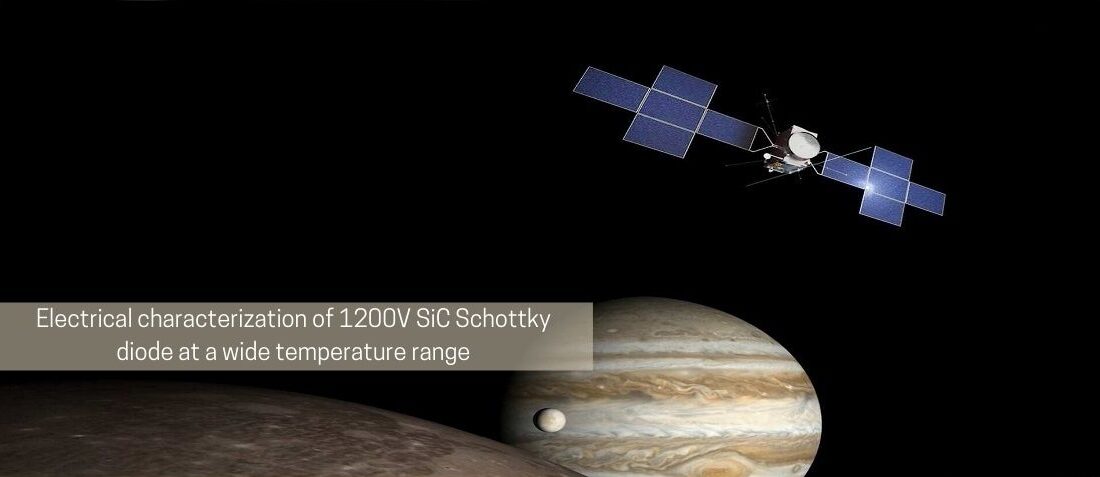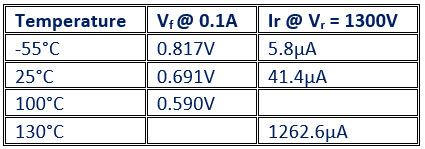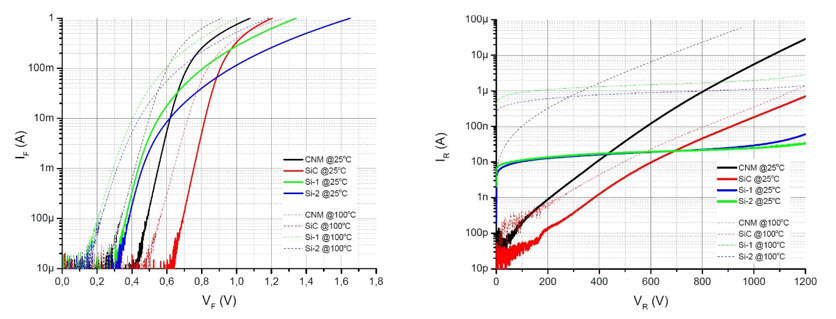
Electrical characterization of 1.2kV SiC Schottky diode at a wide temperature range
- Posted by Javier Alejandro de la Ossa Fernández
- On November 29, 2021
- 0
A new generation of electronic space units
In the power electronics field, as well as in the rest of the electronics world, silicon-based devices have been leading the market, but due to its bandgap, the maximum operating temperature of these devices is limited to around 200°C, while SiC devices have been demonstrated a higher reliable operating junction temperature above 300°C.
This article is the second of a series related to a study published as part of the Work Plan of the Basic Technology Research Programme (TRP) funded by ESA. If you are interested in following this series, go and check the first part.
As we mentioned previously, silicon carbide devices (SiC) are known as wide-bandgap materials and among their benefits is their ability to operate at higher temperatures than silicon-based devices, with higher voltage and lower losses, which are probably the most important factors for power electronic devices.
In high voltage modules for EPCs (Electronic Power Conditioner), there is a critical risk of a thermal runaway due to reverse recovery charge (Qrr) during the turn-off process. The rectifiers and filtering capacitors are placed together in a moulded module, so it is mandatory to keep the temperature below a certain value.
In order to ensure that the SiC diodes developed are temperature independent (Qrr remains constant), we need to find the right compromise between forward voltage drop and reverse current for this application. For this, the static characteristics of these two parameters were measured and monitored under a wide temperature range (25°C and 100°C). The table below shows a summary of a set of 130 devices.

Tabla 1. SiC diodes experimental results
To be able to compare the data obtained, these parameters were also measured for two existing flight models, silicon-based diodes, besides another SiC diode with commercial grade. The following graphs show the comparison for the forward voltage and reverse current characteristics and their evolution with temperature (R.T., 100°C).
The flight models silicon-based diodes are represented as Si-1 and Si-2, the commercial SiC diode is represented as SiC, while SiC diode developed is represented as CNM. Here, it is important to remark that the CNM diode representation is an average of the 130 devices measured.

Left to right: Forward voltage and reverse current characteristics
In the graph on the left side, you can see how the diodes developed (CNM) meet the forward voltage characteristics requirements and reflects the benefits of the optimization process done for both, 25°C and 100°C, being the best case at 25°C and the second best one at 100°C, very close to one of the silicon-based diodes (Si-1). The worst case at 100°C turned out to be the commercial grade SiC diode.
Unfortunately, this behavior in forward mode is not conserved in reverse mode. The silicon-based diodes presented a lower reverse current for higher blocking voltages.
Despite this, the SiC diode should be compatible with the application at a lower blocking voltage. On the right side, at 100°C and up to 300V, the SiC diode developed is better than the silicon-based ones. During the measurement process, some diodes showed a reverse current 3-4 times lower than the average represented in the graph. Selecting these diodes, it is possible to reduce the medium reverse leakage current with negligible difference in the forward characteristics.
Wrapping Up
This article reports the results obtained from an electrical characterization under high temperatures (25°C and 100°C), where forward voltage and reserve current were monitored for a set of 130 devices. The optimization process carried out for these devices reflects an excellent behavior in forward mode and a right compromise in reverse mode for the chosen application.
If you are interested in downloading the complete study for free, click on the link below. The next article will be focused on the switching characterization performed.
Alter Technology, and CNM (Spain National Centre of Microelectronics) have developed SiC Schottky diodes with special packages that offer, in addition to SiC advantages, high junction temperatures, up to 330 degrees Celsius, and protons and gamma radiation tolerance. These components are a perfect solution for high-frequency or hard switching power space applications, and they have already been used successfully in ESA projects. For more information, please do not hesitate to contact us.
- Entangled photon sources for quantum communications - December 14, 2022
- Using optical transceiver technology within space vehicles - November 8, 2022
- Issue 224 of ESCC QUALIFIED PART LIST (QPL) - March 21, 2022

0 comments on Electrical characterization of 1.2kV SiC Schottky diode at a wide temperature range